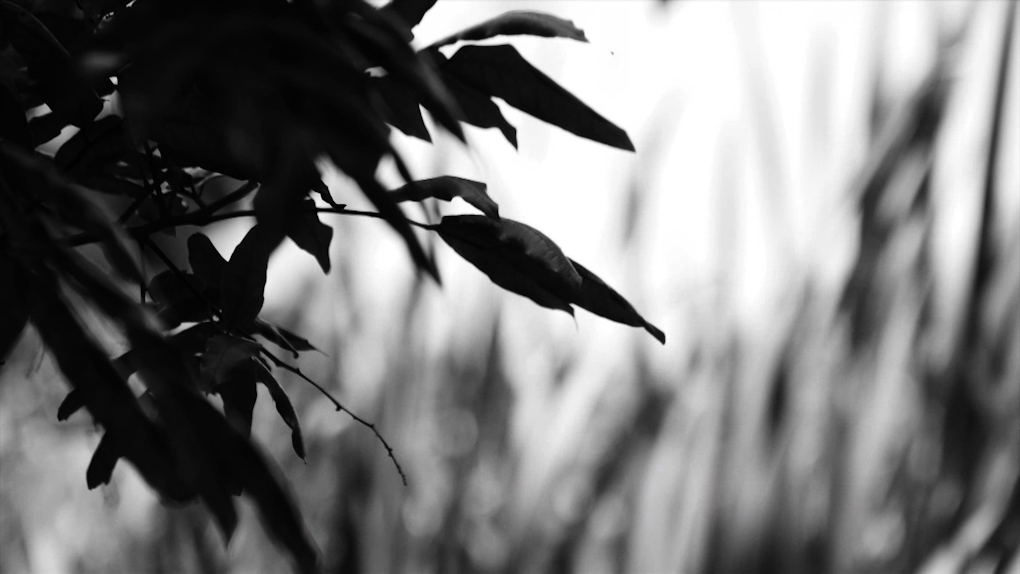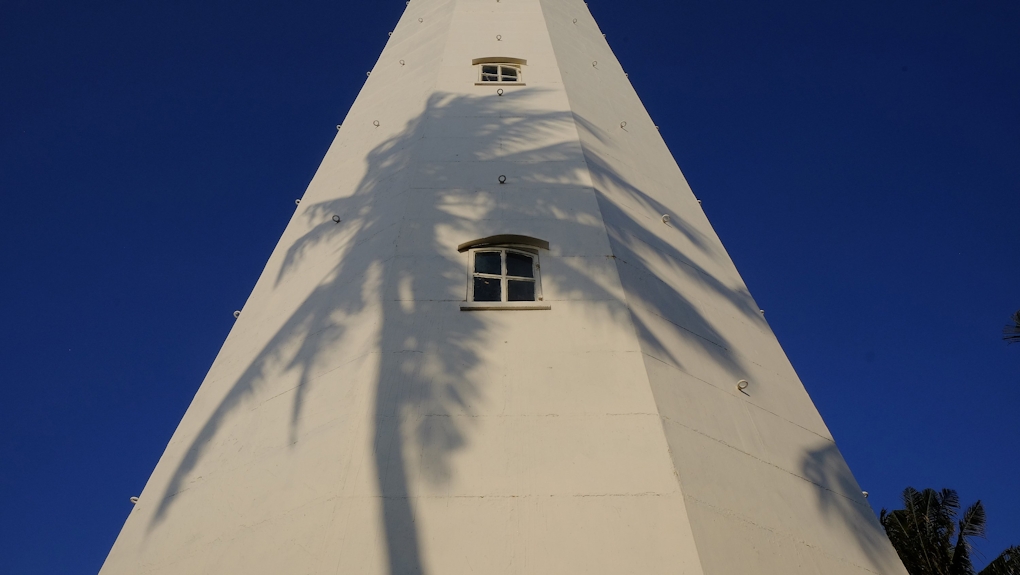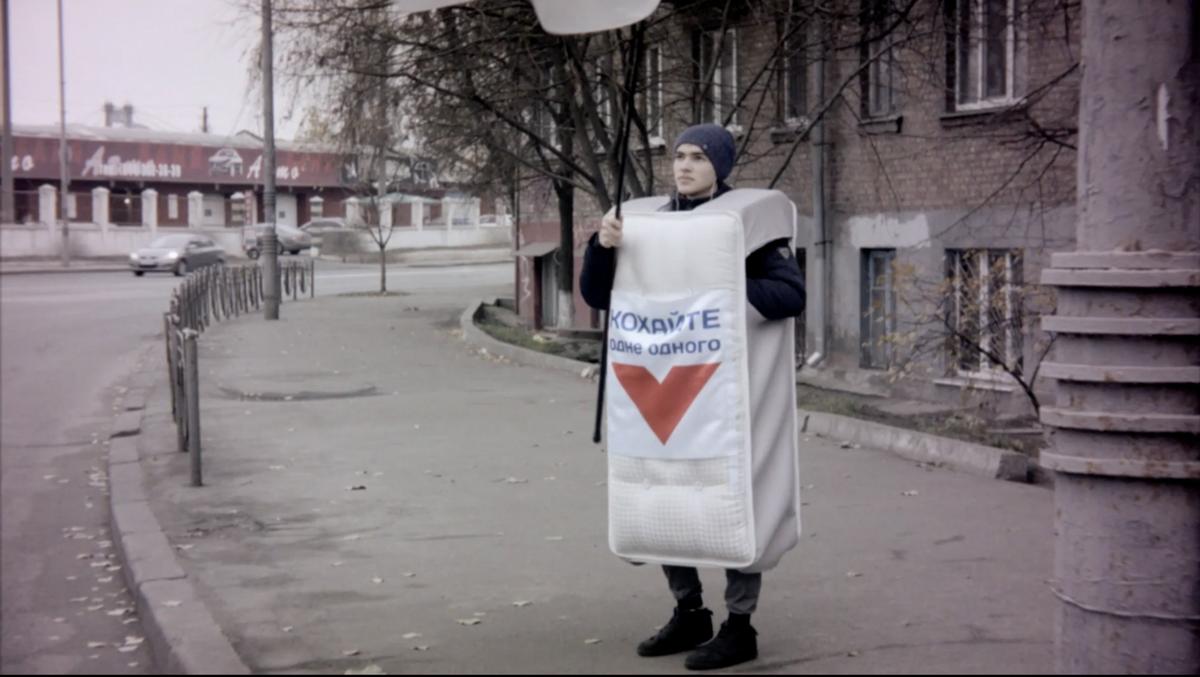Translation is deeply ambivalent: it makes cross-cultural understanding possible, but meaning is slippery and always shaped by power.
Above all, it is the referential principle of images which must be doubted.
If Jean Baudrillard saw cause to look upon cinema’s claim to reality with suspicion in 1987, when giving his evocatively titled lecture The Evil Demon of Images, today he would have even more ample reason to face the screen with suspicion. News has become opinion, entertainment, or both. Lens-based capture is increasingly giving way to pictures that are made rather than taken; assembled in postproduction, they have no referential grounding. “Deepfakes” use artificial intelligence to generate realistic-looking videos depicting events that never occurred, undermining whatever vestiges of trustworthiness remained in visible evidence. At a time of political and ecological emergency—when some say reality has collapsed, when some say truth has died—many practices of image-making have turned away from the world, towards the banal perfection of synthetic creation.
But many others have not. Artists’ documentary practices adopt manifold strategies to engage with the complexity and fragility of worldly reality, making its traces visible in time and in public. For the five artists that comprise this programme, commissioned in 2018 by CIRCUIT Artist Film and Video Aotearoa New Zealand with support from Creative New Zealand, the referential principle of the moving image is not something to be doubted wholesale, but an affordance that spurs poetic inquiries into history, identity, and relations to the land. The image’s ability to capture physical reality is not trusted outright as a guarantee of knowledge or singular truth, but approached as a starting point for processes of reflection, questioning, and attunement that make a claim on the real. These works leave behind postmodern scepticism, trading doubt and suspicion for an attitude of care, asserting a bond to actuality even if the meaning of what is seen and heard remains open to debate. The artists embrace diverse techniques—found footage, interviews, observation, testimony—but in all cases documentary emerges as an inquiry into not simply what we know, but how we know it, as experiments with form dynamically reflect on how to rehabilitate a relationship to reality at a time when it seems everywhere in peril.
Vea Mafile`o’s Toa`ipuapuagā Strength in Suffering was filmed in the Samoan village of Siufaga in 2016, where a young woman named Toa—whose full name, Toa`ipuapuagā, means “strength in suffering”—had begun to display wounds and cuts on her body on Good Friday. On Easter Saturday, she lost consciousness and was pronounced dead, only to reawaken two hours later. Is she displaying the stigmata, manifesting the bodily violence inflicted upon Christ at his crucifixion? Or are these marks the product of earthly self-harm? Mafile`o does not seek to provide a definite answer to these questions; she is unconcerned with affirming or debunking Toa’s claims, with legislating whether we are witnessing a miracle or a hoax. Instead, she finds in the story of Toa a means of inhabiting the uncertain space between the facticity of worldly appearances and the multiple meanings that may be brought to bear upon them—a central tension that pervades all documentary image-making.
Toa`ipuapuagā (Strength in Suffering) (2018) Vea Mafile`o
Mafile`o opens with an overtly performative gesture, filming Toa, clad in a white dress, as she wades into a waterfall, accompanied by Bellini’s aria Casta Diva (1831). A low-definition BBC news clip, manifesting the visible marks of its internet transmission, offers an account of the basic facts of the controversy and brings the embodied specificity captured by Mafile`o’s camera in Samoa face-to-face with the fibre-optic networks of the internet, where the story circulated widely. These digital travel of these images invert the trajectory of much earlier voyages of the 1830s, when missionaries brought Christianity to Samoa as part of the colonial project, importing a faith now held by 98% of the population. Following this opening, Mafile`o pivots to a relatively straight documentary style, filming talking-head interviews with Toa and her family and bearing witness to displays of blood-stained clothing and limbs etched with painful scratches. Further material drawn from the internet appears throughout, joining here with elsewhere, yoking the intensity of religious passion to the frenzy of online spectacle. When, in the film’s final shot, Toa stands in the river in her white dress once more, now in the orans posture of supplication, Mafile`o’s embrace of artifice simultaneously points to the mediated construction of all nonfiction representation and offers a testimony to the complicated reality of her subject. It is a portrait marked by beauty, generosity, and nuance, one that could never appear with the sensationalist frame of mass media representation.
In Mai i te kei o te waka ki te ihu o te waka, Jeremy Leatinuu carries forward a concern with Polynesian circulation while articulating it in a very different way, turning his attention to the journey of the waka Tainui and its people to Aotearoa. With a title meaning “from the bottom of the canoe to the front of the canoe,” this work raises questions of narration and translation by recounting two interconnected stories in a voiceover performed by the artist with quiet intensity. The first is in te reo Māori, subtitled in English, while the second is in English, subtitled in te reo Māori. Both tell of trajectories of migration and settlement that pre-date the arrival of Europeans in Aotearoa, of crossing sea and land in search of a different future, carrying the accumulated practices of the past to new horizons. On screen, placid black-and-white images of landscapes capture a place referred to in both stories, what is now Portage Road in the Auckland suburb of Ōtāhuhu. Although shot in the present, these images convey a sense of timelessness; they are devoid of people, empty of any markers of human inhabitation, with trees and grasses blowing in the wind as they have for thousands of years. When accompanied by the voiceover, what do we see in these landscapes? While there may be no visible inscriptions of the histories Leatinuu recounts, his images of vegetation become screens for the projection of passages long past, sites of living remembrance.

Still from Mai i te kei o te waka ki te ihu o te waka (2018) Jeremy Leatinu’u
Yet Mai i te kei o te waka ki te ihu o te waka is not entirely devoid of traces of contemporaneity. Like Mafile`o, Leatinuu bookends his work with paired images that depart from those that occupy its bulk: to begin and end, he makes use of long shots of the shoreline, where the water meets electricity towers, power lines, and suburban houses. These indices of twenty-first-century life frame the narratives heard on the soundtrack, subtly casting their telling as a recovery of histories that have been overshadowed by the colonial mythology of European settlement as supposed moment of origin and discovery. This gesture is compounded by the prominence of translation on the soundtrack, which orchestrates a confrontation between two cultures—two epistemologies, even—and situates the inevitability of miscommunication at the very heart of the speech act. Translation is deeply ambivalent: it makes cross-cultural understanding possible, but meaning is slippery and always shaped by power. In Aoteoroa New Zealand, the Italian adage traduttore, traditore—“translator, traitor”—has special resonance given the significant differences that exist between the English and Māori versions of the Treaty of Waitangi. Truths can be lost with time and retelling, left to lie dormant in wait of new narrators who will reactivate them in the present. Leatinuu joins in this task.
Mai i te kei o te waka ki te ihu o te waka looks out across Manukau Harbour, the body of water that is the focus of Janine Randerson’s Interceptor. From the time of the waka Tainui to the present, the harbour has been transformed into a public utility, threatened by development and blighted by pollution. Interceptor begins with a reading in voiceover of text drawn from an unsettled 1985 Waitangi submission, claiming rights to the harbour in an effort to repair the ongoing violence of historical land confiscation, as well as to mitigate ecological damage stemming from development projects in the area. Randerson sets a polyphony of voices over images of the harbour, alternating between a diptych format and watery expanses shown in a widescreen format. Much of the sound is comprised of recordings of meetings of the Manukau Harbour Restoration Society, an organisation formed in 2011 that is devoted to the protection of the harbour and the improvement of its environmental conditions. They discuss increasing salinization, the changing habits of animals, sewage treatment, and fishing practices, with all attention directed towards the contemporary degradation of a precious resource, one that is sacred to local Māori people. As environmental activist Carmen Kirkwood puts it in the treaty submission, “The Manukau not only belongs to us but we to it. We are a people begotten from within the depths of its waters.”
Interceptor (2018) Janine Randerson
The Manukau Harbour is in danger, but in many of Randerson’s images, lush and liquid as they are, no indicator of this can be seen. Certainly, there is the occasional appearance of a pipeline or an electricity tower, but these are dwarfed by the natural beauty that pervades most of the film’s images. The schism between voice and picture that emerges in Interceptor speaks to one of the great problems of ecological crisis: it may not manifest itself visibly until it is too late. Timothy Morton has deemed global warming to be a “hyperobject,” something that is so temporally and spatially vast that it resists apprehension. The contamination of Manukau Harbour may be easier to conceptualize and quantify than a warming planet, but spreading awareness and mobilizing resources in the service of change meet the same difficulties in both cases: the most deleterious effects do not yield to vision alone, and power is concentrated in the hands of those who think of value only in economic terms. By documenting the activities of those who seek to protect and rehabilitate the harbour, juxtaposing the urgent advocacy of the soundtrack with images in which injustice and emergency remain largely invisible, Randerson calls upon the power of visible evidence while also underlining its limits. Images can testify, but their testimony may mean very little unless there are frameworks of presentation and understanding through which they become legible.
Bridget Reweti’s Ziarah takes to the open sea once more, in search of the remains of Tupaia, a nobleman from Raiatea in the Society Islands who was indispensable in liaising between Māori and the crew of James Cook’s ship the Endeavour on its first visit to Aotearoa New Zealand in 1769. Guided by Safir Islami, Reweti travels to Damar Besar, an uninhabited island in Indonesia where Tupaia and his nephew Taiata are believed to be buried. Ziarah relays the story of Reweti and Islami’s pilgrimage through the latter’s voiceover, set against calm images of the ocean’s surface and the great forests of Damar Besar, with the graves themselves never pictured. Rather than simply relay information about Tupaia, Islami telescopes then and now, bringing together Tupaia’s story with remarks about contemporary ecological problems, including trawling, overfishing, and the devastation of coral reefs. Echoing the schism between voice and image that marks Randerson’s Interceptor, he articulates how deceptive appearances can be when environmental damage is concerned: “The water looks clear but most of the coral has been destroyed.”

Still from Ziarah (2018) Bridget Reweti
The work’s title gives a hint of the significance of this story to the artist: it is an Arabic term used in Indonesia to refer to a pilgrimage to a holy place or grave, designating a journey of spiritual and/or ancestral significance. The search for Tupaia is a search to re-tell the history of cross-cultural encounter in Aoteoroa New Zealand from a non-European point of view, to recover an ambivalent mediating figure from within a history often conceived as binary. Cook’s description of Tupaia, found in his journal of 1770, suggests something of the navigator’s interstitial status: “He was Shrewd Sensible, Ingenious man, but proud and obstinate which often made his situation on board both disagreeable to himself and those about him, and tended much to promote the deceases [sic] which put a period to his life.” On the one hand, Tupaia is emblematic of the navigational knowledge and rich oceanic exchanges that predate colonial boundaries in the Pacific; on the other, he used his diplomatic and seafaring powers in the interests of European explorers who suffered no casualties under his guidance. In this regard, the life of Tupaia offers instructive propositions for the writing of history: he is a figure of circulation that forges connections between narratives that might be conceived of as separate, one who reminds us that the past is populated not by pure heroes and pure villains, but by conflicted individuals acting variously out of necessity, contingency, affinity, and principle.
Weight (2018) Andrew de Freitas
The programme concludes with Andrew de Freitas’s Weight, a portrait of trans musician Lees Brenson, who performs under the name Dregqueen. Weight largely takes the form of an interview in which de Freitas asks Brenson about her life and work. Handheld shots frame her face in close-up, with jump cuts occasionally interrupting the flow of recorded time. This is, however, no exercise in cinéma vérité, but a complex negotiation of the boundaries of truth and fiction, particularly as they pertain to competing image economies and the actualization of the self. De Freitas begins by prompting Brenson to reflect on footage viewed on a laptop of a young man on a Kiev street corner, dressed in a mattress costume and waving a flag, tasked with advertising to the passing vehicles. De Freitas and Brenson speak of the images as if they represent her past, but something is awry: the cars seen in the Ukrainian footage appear to be of relatively recent vintage, and Brenson’s accent is decidedly Canadian. And yet through the uncertain artifice of this encounter, something genuine of Brenson’s reality begins to emerge, as she speaks of her feelings about work, comfort, weight, and music. De Freitas blends heterogeneous image textures, weaving the crispness of the interview images with murkier performance footage, documentation of the Kiev street corner, and pixelated Russian-language advertisements for mattresses and bedroom furniture in which women levitate and all families are happy, well rested, and heterosexual. De Freitas’s recontextualization of these ads shows up the sinister falseness of their spell, particularly when they are accompanied by the industrial sounds of Dregqueen and her entreaty, “I want to feel your weight.” What appears first as an individual portrait gradually metamorphoses into something much larger: an effort to puncture the monopolization of reality by the forces of normativity. Against essentialist conceptions of gender, and against capitalist attempts to narcotize the masses through the drug of consumption, Weight recovers the power of antagonism and contestation, claiming the right to craft the contours of one’s own existence. Though it is situated far from the Pacific waterways that flow through the other four works of the programme, Weight joins them in mobilizing the testimonial power of image and sound to challenge hegemonic narratives and the visual rhetorics through which they are often communicated. Across Truth or Consequences, the moving image—so often in the service of media spectacle, so often linked to the fading of reality and the domination of life—becomes a means of shaping an encounter with our shared world, one that occurs far from the logics of privatization and distraction that increasingly surround us.
Above all, it is the referential principle of images which must be doubted.
